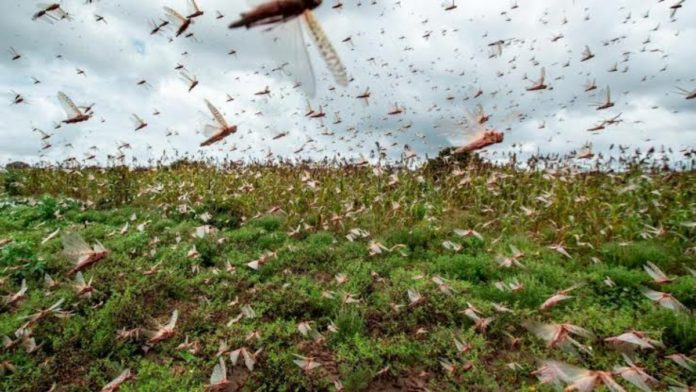Namibia has announced a third locust outbreak in Karasburg District, Karas Region in the southern parts of the country. Ministry of Agriculture, Water and Forestry spokesperson Jonah Musheko made the announcement.
“The first outbreak was reported on September 21, 2021, by a commercial farmer and a team was immediately dispatched. Unfortunately, they could not trace. The initial control commenced on November 3, 2021, in the Karasburg district and by then, the infested area was estimated at approximately 800,000 hectares of farmland, and over 240,000 ha surveyed with approximate 2,000 ha treated/sprayed,” said Musheko.
According to Musheko, since mid-December 2021, the ministry has been detecting swarms of brown locusts and spraying teams have been dispatched and are in the field to date. He explained it has been a challenge for Namibia to contain the locust outbreak since most of the swarms are flying in from neighbouring Botswana and Zambia.
Affected areas
The Karas region along the South African border, which is famed for diamond mining as well as small stock farming, is the hardest hit, with 775,000 hectares of grazing partly affected. Grazing land in the fertile Zambezi region, which borders Zambia, Zimbabwe Angola and Botswana, has also been extensively damaged.
“As of yesterday, spraying was carried out at the farms Nakop up to Swartkop, covering approximately a total of 80,000 ha. These first instar locusts are still hatching, they do not move much and did not form groups yet. However, there are large swarms of adult locusts that migrated through the area while reproducing,” he added.
Musheko, meanwhile, encouraged farmers to continue monitoring and scouting their farms and report any new incidents of locust infestations.








